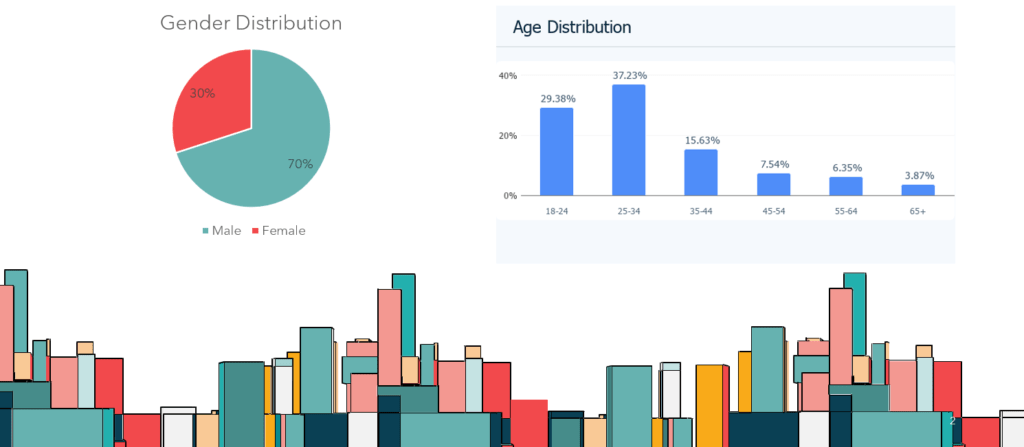When we talk to clients today, the greatest challenge they face in selling their products is the commercialization of the product in the digital space. Every business today wants to capitalize on the opportunities that the vast advancements in technology bring in. Even brands that sell complex products. Even today, if e-commerce sites are to be considered, the majority of the products purchased range under the category of clothes, accessories, and footwear. Products like electronics, furniture, and jewellery have a limited digital customer base. Why is that? Even with technology today creating human clones, why don’t people trust an online purchase when it comes to such complex products? Is it because they don’t trust the brand? No. It is because they don’t find the human touch the actual store visit comes with.
Complex products often involve multiple features and functionalities and potential customers may have specific requirements and doubts. But then complex product-selling brands often lose out on the benefits technology provides other business owners like increased revenue streams, catering to the digital-first generation or staying in touch at all times, and building loyal relationships with customers. This is where 3D visualizers & configurators come into the picture.
A 3D visualizer is a tool that helps businesses showcase their products in a more engaging and visually appealing manner to provide customers with a better understanding of the product’s features, design, and functionality digitally.
Common Pain Points Of Customers
We recently conducted a survey to understand the pain points of customers:

We found the common ones to be:
1. Clients may be confused or may not be able to articulate what they want and so have a lot of questions when it comes to complex products.
2. Being fascinated by the available products might make them lose perspective of their original needs or preferences.
3. Not having freedom in the design process or the development of other features might make them compromise on their choices.
New Sales Process- 3D Visualizers & Configurators
3D visualizers & configurators can cater to all these problems and help sell complex products online. This tool can be integrated int any platform. If developed with an interactive and immersive virtual store, it can help bring the realism of an in-store purchase online. Interaction with products enables brands to allow customers to zoom in and rotate to appreciate intricate designs, finishes, and textures. Configuration capabilities allow customers to tailor the offerings to their needs. If a product has different types, side-by-side comparisons can help customers experience the actual look before purchase, which rarely happens offline. 3D visualizers & configurators also allow customers to share their selected or configured products and features with their family and friends for a collaborative decision.
When customers deal with complex products, they need to have confidence that they are making the right decision. A human touch allows for direct interaction, which helps in establishing trust and credibility. 3D visualizers & configurators with sales support help do just that.
Here are some tips:
1. Understand the customer’s requirements and pain points.
2. Use the 3D product visualizer to demonstrate how the product works, highlighting its key benefits and advantages. Create high-quality 3D models and assets of your products.
3. Based on the customer’s specific needs, tailor the presentation of your complex product using the 3D visualizer. Design an intuitive and user-friendly interface for the 3D visualizer and configurator. Allow the customers to configure product features. Ensure that changes made by customers to the product are reflected instantly in the 3D visualizer.
4. Optimize the visualizer and configurator for mobile devices, as many customers browse and shop from their smartphones and tablets. Keep the loading times and performance of the visualizer and configurator optimized to avoid frustrating delays.
5. Collect data on customer interactions with the visualizer and configurator. Analyze this data to gain insights into customer preferences, popular customizations, and pain points.
6. During the sales process, customers may have concerns or objections. Deploy an AI-powered chatbot or a virtual sales avatar to address these concerns by providing real-time information.
7. Once the customer is interested, provide a detailed pricing proposal, an option to book an in-store visit, a test drive, or nudge the customer to take action relevant to the business.
8. Continuously monitor the performance of the visualizer and configurator through A/B testing.
Product Discovery Through A Virtual Sales Representative

A virtual sales representative can engage in personalized conversations, understand intent, and actively listen to identify the customer’s needs better. Brands can deploy a chatbot or a virtual avatar powered by AI to humanize the product discovery experience for customers.
The product discovery phases :3D visualizers & configurators:
1. Initial Contact: This stage involves the first interaction between the brand products and the potential customer where the customer starts looking at the catalogue.
2. Needs Assessment: During this stage, the virtual salesperson assists the customer in gaining a better understanding of their requirements and desires.
3. Evaluation: At this stage, the customer begins to consider various product options, its features and conducts a comparison study.
4. Solution Development: In this stage, the customer engages with a select group of components and interacts with the configurator to develop desired solutions.
5. Decision Making: The customer then reaches a point where they decide whether or not to make the purchase.
6. Post-sale Support: This stage occurs after the purchase when the customer requires assistance regarding product delivery, in-store visit booking, payment, etc.
With a virtual salesperson, there is no margin of error with what the brand representative understands and conveys to the customer since the information is directly fed from the brand and the bot is trained accordingly. The job of this virtual sales assistant is to not just convey information but make sure that the customers feel that the insights acquired are authentic. This AI-led avatar uses the information collected from customers to analyze behaviour that helps identify whether he or she is serious about the purchase or is here to just learn about the products and explore.
The avatar then maps out the next best course of action to take like directing the user to the entire catalogue or only the parts the user has shown interest in, booking a demo, downloading a brochure, etc that fits the profile the best. These avatars engage with customers with the aim of solving their problems and have more resolve to tweak the experience according to the changing demands of the customer.
Gen AI Powered Interactions On 3D Visualizers & Configurators
Traditionally, avatars or chatbots were limited in their conversational abilities, often relying on pre-programmed responses or scripted dialogues. However, with the integration of Gen AI, avatars or chatbots can now engage in dynamic and more realistic conversations. Gen AI’s vast knowledge base, trained on a wide range of topics, allows avatars to provide more accurate and contextually relevant information to users.
Take this conversation for example- On an automotive brand’s digital platform:


Gen AI-led avatars boast of advanced realism, human-like lip sync, movements and gestures, integration with large language models for more efficient conversations, validated responses from more than one source, and curated information that prevents unexpected responses and insights misaligned with the brand guidelines.
How Can DaveAI Help?
We have been assisting industry-leading names like Hindware, Merino Laminates, Jaquar, and ICA Pidilite to enhance their sales and customer experiences with 3D visualizers & configurators.
We recently launched our new Generative AI pipeline which means more realistic avatars and advanced interactions for brands and their customers on various platforms. Our full-stack model is designed to provide a complete solution by incorporating both text generation and speech processing. With our NLP engine and state-of-the-art recommendation system, we leverage the power of this duo to enhance brand-customer interactions. The model is completely customizable. With secured API-based approaches, businesses can seamlessly integrate our model into their existing systems.
Book a demo with us to know more: Book Demo



